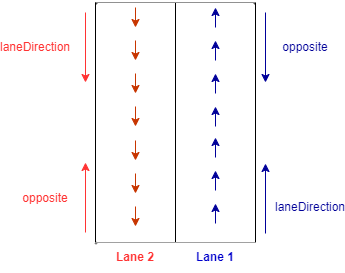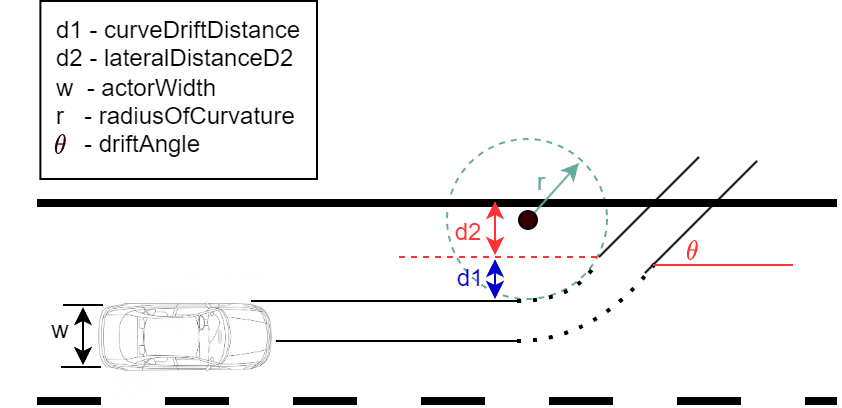generateWaypoints
Syntax
Description
Lane Change Waypoints
[
generates waypoints, waypoints,yaw] = generateWaypoints(descriptor,"LaneChange",source,destination)waypoints, and yaw angles,
yaw, to change lanes from a source lane,
source, to a destination lane, destination,
for the input scenario descriptor, descriptor.
[___] = generateWaypoints(
generates waypoints from a source, descriptor,"LaneChange",source,laneChangeDistance)source, to a destination on its
left lane located at a specified distance, laneChangeDistance, along
the travel direction of lane.
[___] = generateWaypoints(___,
specifies options using one or more name-value arguments in addition to any combination of
arguments from previous syntaxes. For example, Name=Value)NumSamples=10 generates
waypoints that contain 10 samples.
Lane Drift Waypoints
[
generates waypoints for the vehicle to drift out of the source lane based on the specified
drift curvature, type, and lateral distance or angle, as well as the actor width.waypoints,yaw] = generateWaypoints(descriptor,"LaneDrift",source,radiusOfCurvature,driftType,driftValue,actorWidth)
[___] = generateWaypoints(
specifies options using one or more name-value arguments.descriptor,"LaneDrift",source,radiusOfCurvature,driftType,driftValue,actorWidth,Name=Value)
Note
This function requires the Automated Driving Toolbox™ Test Suite for Euro NCAP® Protocols support package. You can install the Automated Driving Toolbox Test Suite for Euro NCAP Protocols support package from the Add-On Explorer. For more information about installing add-ons, see Get and Manage Add-Ons.
Examples
Input Arguments
Name-Value Arguments
Output Arguments
Limitations
The function does not support generating waypoints for the roads with composite lanes
specified by the compositeLaneSpec
objects.
More About
References
[1] European New Car Assessment Programme (Euro NCAP). Test Protocol – Lane Support Systems. Version 4.2. Euro NCAP, November 2022. https://cdn.euroncap.com/media/75440/euro-ncap-lss-test-protocol-v42.pdf
Version History
Introduced in R2024a



